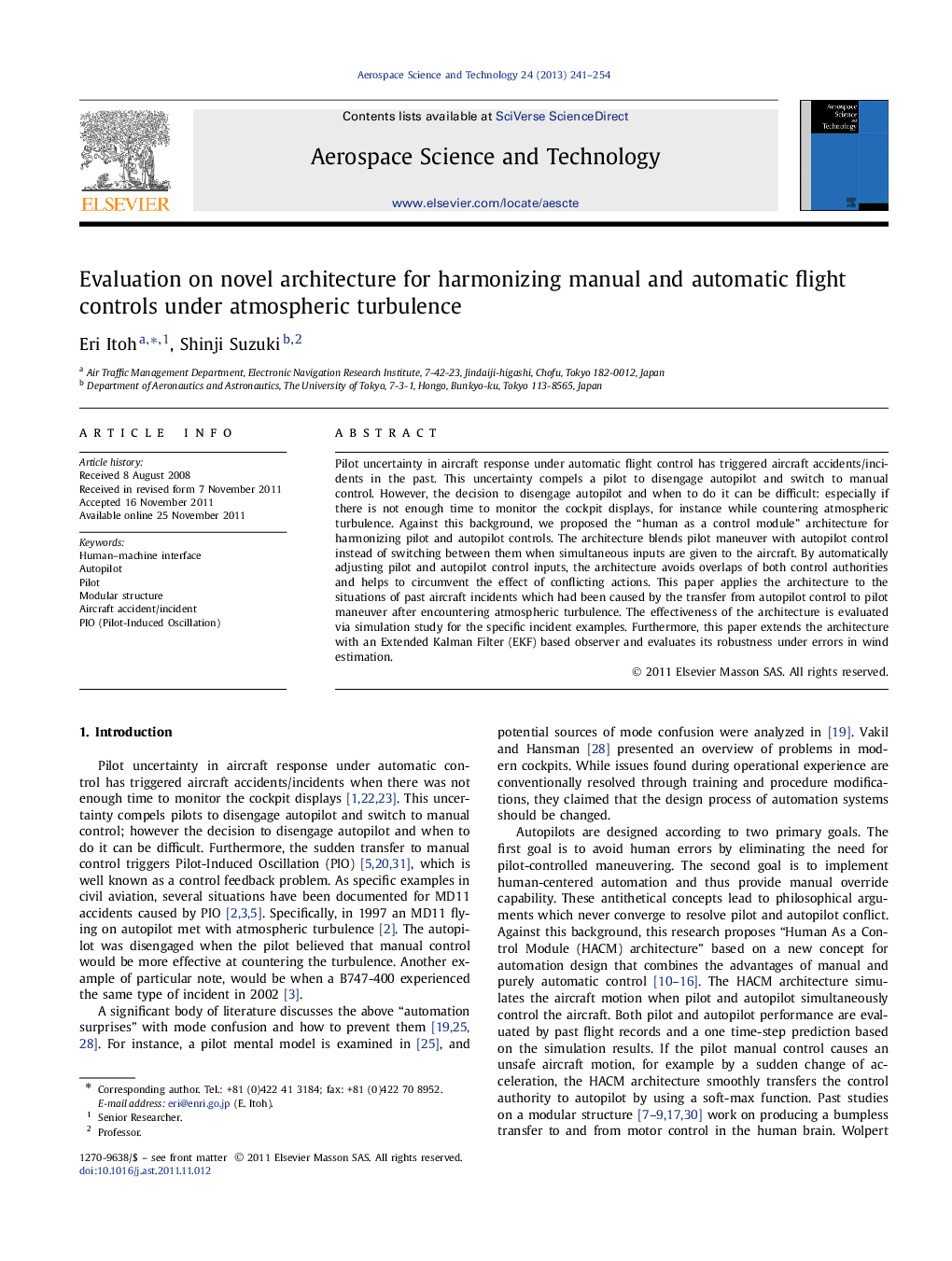| Article ID | Journal | Published Year | Pages | File Type |
|---|---|---|---|---|
| 1718335 | Aerospace Science and Technology | 2013 | 14 Pages |
Pilot uncertainty in aircraft response under automatic flight control has triggered aircraft accidents/incidents in the past. This uncertainty compels a pilot to disengage autopilot and switch to manual control. However, the decision to disengage autopilot and when to do it can be difficult: especially if there is not enough time to monitor the cockpit displays, for instance while countering atmospheric turbulence. Against this background, we proposed the “human as a control module” architecture for harmonizing pilot and autopilot controls. The architecture blends pilot maneuver with autopilot control instead of switching between them when simultaneous inputs are given to the aircraft. By automatically adjusting pilot and autopilot control inputs, the architecture avoids overlaps of both control authorities and helps to circumvent the effect of conflicting actions. This paper applies the architecture to the situations of past aircraft incidents which had been caused by the transfer from autopilot control to pilot maneuver after encountering atmospheric turbulence. The effectiveness of the architecture is evaluated via simulation study for the specific incident examples. Furthermore, this paper extends the architecture with an Extended Kalman Filter (EKF) based observer and evaluates its robustness under errors in wind estimation.
